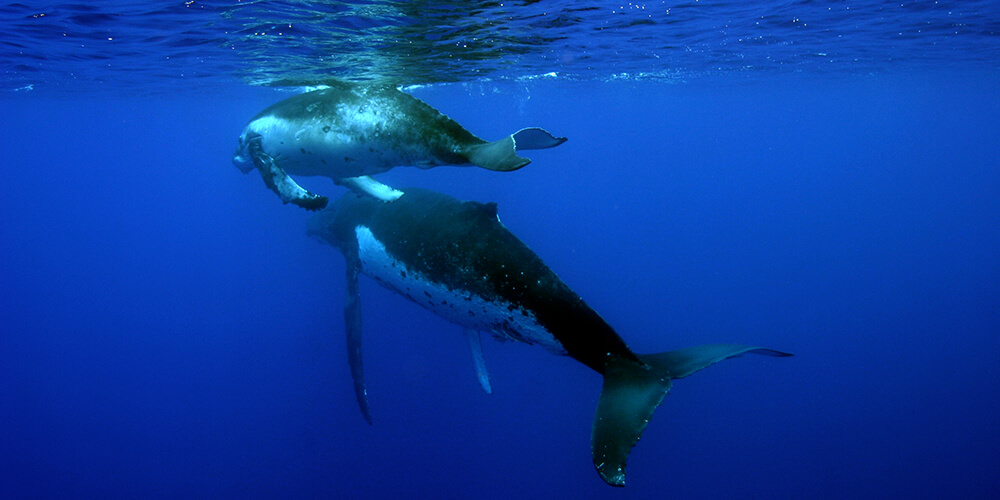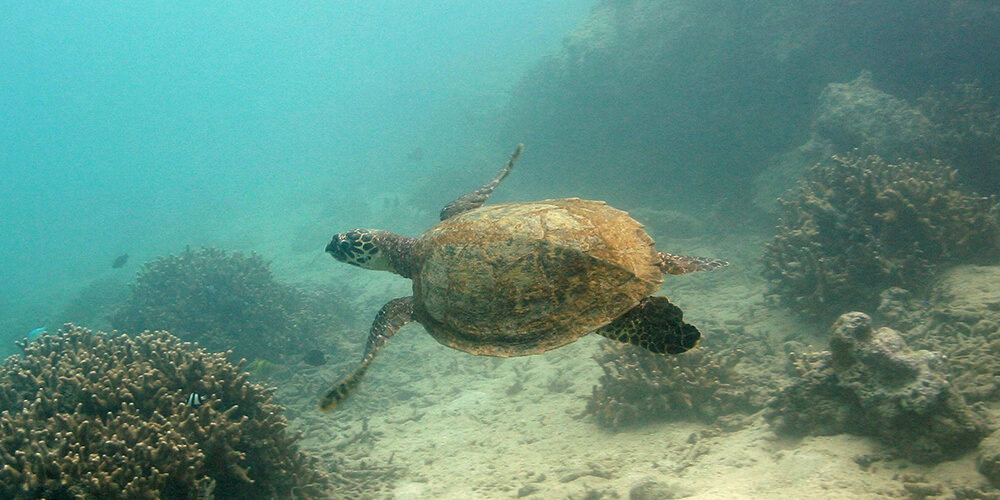Protected species
The 1973 Endangered Species Act aims to support the recovery of species that are in danger of extinction. Marine protected areas like National Marine Sanctuary of American Samoa protect and preserve endangered species and their unique marine environments, ensuring that they will always have a home.
In 2003, American Samoa declared all its territorial seas to be a whale and turtle sanctuary. This action complimented federal and local regulations, including the Endangered Species Act, that prohibit any harassment or take of marine mammals and sea turtles. Further protections have been recently extended to highly prized fish such as the Maori wrasse and the bumphead parrotfish. Because of decades of overfishing, these species are low in number, and smaller in size than they once were.
Humpback whales

Each year, humpback whales (Megaptera novaeangliae) come to the warm tropical waters of American Samoa, including parts of National Marine Sanctuary of American Samoa, to court and give birth. Humpback whales are baleen whales, and strain plankton, krill, and small fish out of the water for food. Each year, they migrate between cold-water feeding grounds and warm-water areas where they mate and give birth. All marine mammals, including humpback whales, are protected by federal law through the Marine Mammal Protection Act, and locally through the government of American Samoa.
Sea turtles

American Samoa is home to several species of sea turtles. All are considered threatened or endangered, and are protected under the Endangered Species Act of 1973. Most people never see the loggerheads, leatherbacks, and olive ridley sea turtles that live further offshore, but the green and hawksbill turtles are coastal dwellers, and are occasionally seen.
Green sea turtles (Chelonia mydas, or laumei ena`ena in Samoan) reach reproductive age at 25 to 35 years, and then can live another four or five decades. A relatively small number of hawksbill turtles (Eretmochelys imbricata, or laumei uga in Samoan) live year-round in American Samoa. Due to toxins in their flesh, they are not usually hunted for food. However, their beautiful shells are desired for jewelry and other decorations so they continue to be hunted throughout their range. Since female sea turtles do not begin to lay eggs until they are 20 years old or older, it will take a long time, even if they are safe from hunters, for the population to recover.
Turtle Tidbits
- Green sea turtles' name refers to their flesh, which has a greenish hue due to their diet of seagrass and algae.
- Green sea turtles grow up to over three feet in length and can weigh 300 pounds. Hawksbills are typically two to three feet long and weigh 100 to 150 pounds.
- Turtles come to shore to lay eggs or to occasionally bask in the sun.
- A popular South Pacific legend tells that mother sea turtles eat their young. Not true! Green sea turtles are completely vegetarian.
- The temperature of the beach where sea turtle eggs mature can dictate the sex ratio of the hatchlings. The warmer the sand, the more females that hatch.
- Leatherback turtles eat open-ocean critters, and prefer a diet of jellyfish. Unfortunately plastic bags look a lot like floating jellyfish and sadly, dead turtles with plastic bags in their gut are not uncommon.
- Female turtles will come to shore every few weeks in the breeding season to lay clutches of eggs. Although a turtle may lay several hundred eggs, very few hatchlings will survive to adulthood.

